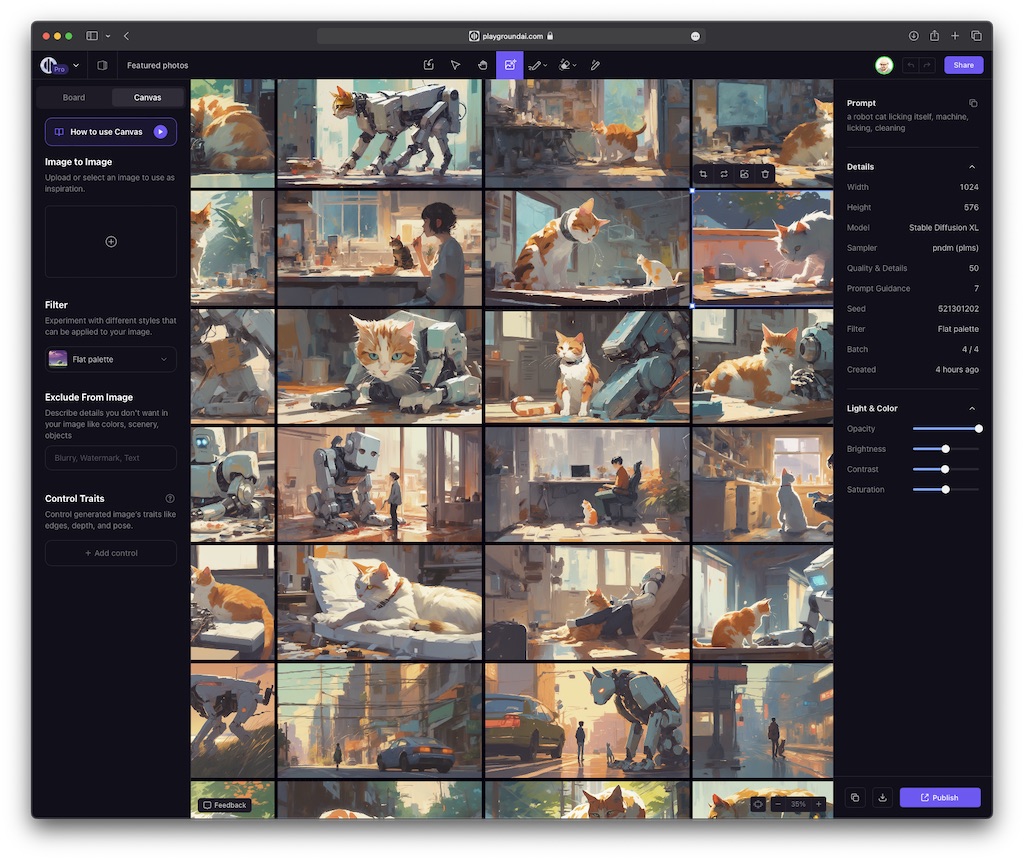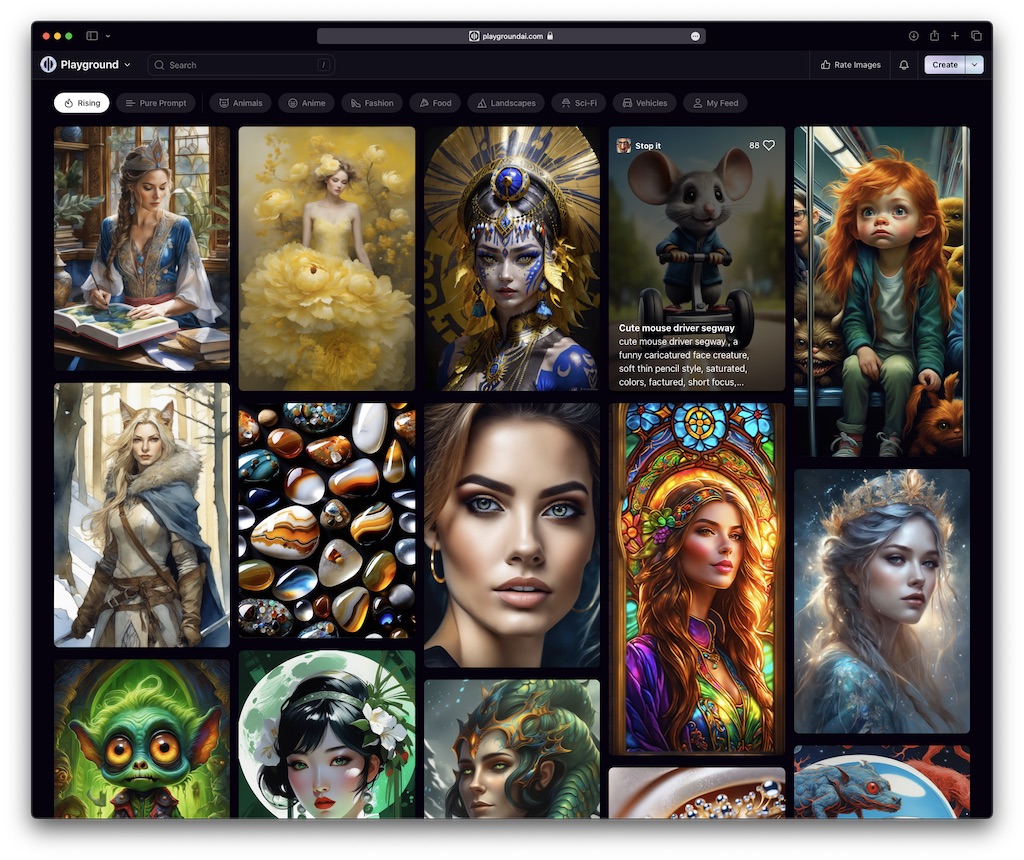3.4. Discovery
When exploring AI-powered apps to write case studies for this book, I stumbled upon a fascinating solution to a classic design problem: When you have the power to instruct AI to create anything, what do you specifically ask for?
Since generative AI is inherently unpredictable, no two outputs will be identical if different seeds are used. As a result, achieving the desired outcome often involves a process of iteration, brimming with experimentation, due to either ambiguous instructions or the unpredictable nature of the results.
Take this for instance: I use Playground to conjure feature images for my articles. I aimed to produce an image of a semi-robotic cat licking its paw. It took an arduous 50 attempts before I was content with an image. Yet, despite my best efforts, the algorithm fell short of depicting the cat in the specific act of licking. And believe me, my early days experimenting with image-centric models were even more challenging.
So, from a product design perspective, how do you streamline a user’s learning curve? Expecting them to navigate the maze of trial and error might deter many. This might be why many AI-driven platforms, including Playground AI, incorporate features such as galleries, community feeds, remix options, and collaborative modes.
Observing other users’ approaches provides invaluable insights. You can mimic their prompts, tweak them to your preference, and hasten the learning process. While seasoned users might outgrow the need for such galleries, they serve as a pivotal guide for novices.
Clever.

